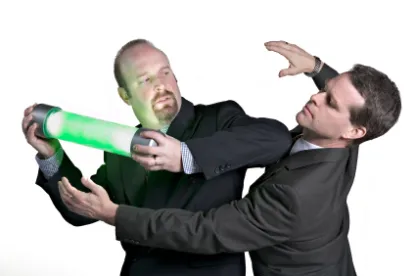Addressing issues of claim construction for a Markush group, the US Court of Appeals for the Federal Circuit reversed-in-part a district court “closed” Markush group claim construction and vacated its summary judgment of non-infringement. Multilayer Stretch Cling Film Holdings, Inc. v. Berry Plastics Corp., Case Nos. 15-1420; -1477 (Fed. Cir., Aug. 4, 2016) (Dyk, J) (Taranto, J, dissenting in part).
Multilayer and Berry Plastics are two leaders in the plastic film industry, specifically with regard to multilayered plastic cling wrap films. Multilayer alleged infringement of its patent directed to multilayered thermoplastic stretch wrap films that cling to themselves and are used to wrap boxes, furniture and other items. The claimed invention relates to plastic films that have at least seven individual layers in the film composition and offer acceptable cling performance, good balance of strength and good elongation properties. The layers of the film are distinguished by their structure: the films contain two outer layers and at least five inner layers, each of which is compositionally distinct from its direct neighboring layer. The outer layers contribute moderate to high controlled cling, whereas the inner layers assist in mechanical strength and stretchability.
The claim term in issue related to the inner layers and recited:
. . . five identifiable inner layers, with each layer being selected from the group consisting of linear low density polyethylene, very low density polyethylene, ultra low density polyethylene, and metallocene-catalyzed linear low density polyethylene resins . . . .
The district court concluded that each inner layer “must contain only one class of [the listed] resin(s),” thereby excluding blends of more than one type of resin and all unlisted resins. On the basis that the accused films included (in their inner layers) blends of classes of resins from the “closed” Markush group as well as resins not included in the Markush group, the district court found, on summary judgment, that Berry’s products did not infringe. Multilayer appealed.
On appeal, the Federal Circuit was asked to consider two questions relating to the Markush group claim language: (1) whether the claimed Markush group was closed to resins other than the four listed, and (2) whether the claimed Markush group was closed to blends of the four listed resins. The Court explained that a Markush group claim is a particular kind of claim element that lists alternative species or elements that can be selected as part of the claimed invention. Thus, Markush group claim language creates a customized “group” that lists specified alternatives included in the claim element. Such groups are typically recited in the following form: a member selected from the group consisting of A, B and C. The Court agreed that the claim element in issue here created a Markush group that listed four types of resins that are understood to be alternatively useable for preparing inner layers for the claimed film.
With respect to whether the claimed Markush group was closed, the Federal Circuit agreed with the district court that the group was limited to only the four listed resins. Relying on well-established precedent, the Federal Circuit determined that the use of the transitional phrase “consisting of” created a strong presumption that the claim element was “closed” and excluded any elements not specified in the claim, notwithstanding that the specification and dependent claims describe or recite unlisted resins for use in the inner film layers. Disagreeing with the majority, the dissent argued that it is the “layer,” not the “resins” or “materials,” that must be selected from the group of listed resins. Therefore, since “layers” are composed of things and are physical structures characterized by a spatial relationship to some other physical element, the “layer” does not “have to be one or more of the listed species of resin.”
With respect to the question of whether the Markush group was closed to blends of the four listed resins, the panel unanimously determined that the district court erred. The Federal Circuit explained that the “closed” language presumption that relates to the term “consisting” can be overcome by a combination of other claim language and the specification. The Court determined that the Markush group here was open to blends of the four listed resins, relying on the fact that the specification “repeatedly and consistently references blends in describing any and all resins,” including those of the claim element in question. Moreover, the specification and prosecution history discuss the importance of blending the resins in order to achieve desired physical and mechanical properties.
The Federal Circuit therefore reversed the summary judgment finding of non-infringement with instructions to determine, on remand, if the use of blended resins in the inner layers of the accused product were infringements.



 />i
/>i

